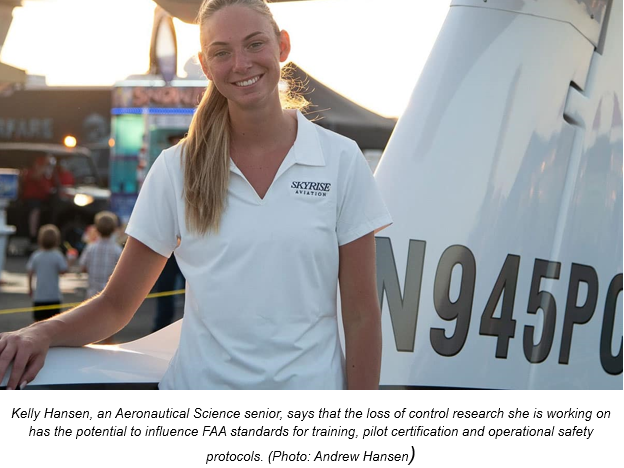Psychology Research points to the important role PSYCHOLOGY has in AVIATION SAFETY

When Crew Resource Management (CRM) was introduced in the United States in the late 1970s, aviation increased its awareness of human psychology became more front of mind of researchers, operators, and regulators[1]. Many of the professionals who joined this work were proficient in the hard sciences. The 1970s research on CRM precipitated further examination of psychology and safety.
Below are two articles that assert that FEAR and the LACK OF TRUST can HARM SAFETY CULTURE. The Embry-Riddle study focuses specifically on these psychological attributes in the maintenance area.
The second report concludes that SENIOR MANAGEMENT must create a workplace in which everyone is EMPOWERED to contribute to SMS. The FAA has established that the ACCOUNTABLE EXECUTIVE has that responsibility; AE is not just a honorific title, but an assignment of great responsibility requiring contact with all of the relevant employees to HEAR THEIR CONCERNS and make it clear that ANY SAFETY REPORT IS ABSOLUTELY, 1,000% PROTECTED.

If everyone in the company does not know who the ACCOUNTABLE EXECUTIVE (AE) is that’s strong evidence that the Safety Culture is not really effective. That visible, able leader MUST foster an environment where employees are empowered to prioritize safety without fear of reprisal. Trust is a cornerstone of effective safety leadership. AEs must earn the trust of the employees, enabling smoother implementation of safety policies and obtaining necessary approvals. When trust exists, employees are more likely to comply with safety instructions and procedures. While safety managers focus on compliance with regulations, AEs must actively promote safety as a core value. They seek ways to enhance safety protocols and mitigate hazards proactively, rather than merely reacting to incidents.
As FLIGHT SAFETY FOUNDATION’S DR. SHAHIDI, has recently proclaimed:
“COMPLACENCY is a stealthy threat that can erode safety and quality unless it is actively COUNTERED WITH A ROBUST SAFETY CULTURE.”
.As Embry-Riddle explained SAFETY CULTURE cannot be measured by a hard data audit. The psychological traits that evidence that TRUST or FEAR exists.
So, what is this amorphous thing– SAFERY CULTURE? It cannot be completely defined without context. Dr. Shahdi did not define it in specific terms. Anyone who hands you a generic program and manuals, has not been washed in the essentials of this discipline.
To assess this intangible spirit begins with an honest assessment of the current status and determining what to build on, reinforce and change aspects of your organization. A 3600 across all disciplines team performs these seminal steps. Being part of the company, being critical of other offices and finding solutions is a difficult assignment. Objectivity may be challenged and a menu for establishing the CULTURE may benefit from an outside process guide.

Embry-Riddle explains the insidious nature of a poor safety culture. A lawsuit in which a veteran employee alleges that her peers created an atmosphere of fear, and the company appears to not have addressed this harm to its Safety Culture. A more charitable and/or realistic explanation was that management was unaware of this nefarious situation. Sending internal staff to investigate this lack of trust is not as likely to identify the problem nor define the solution as outside experts. Using proven procedures, a Safety Culture Assessment, they can provide an accurate assessment and recommendations. Here is a description of how such a tool can help:
…the ways in which the company treats employees to the interactions between teams and beyond, all the moving parts within a given organization shape corporate culture. Safety culture finds its foundation in the broader context of corporate culture. If a business does not properly and actively care for its employees, or if colleagues do not get along well, the workplace might become a hostile and toxic environment. On the other hand, if the business takes corporate culture seriously and manages this facet in a progressive fashion, with the company showing its employees that their comfort, safety and success are valuable, the workplace will be a far more profitable and enjoyable. It has been shown in the past that choosing profits over safety can be a false and unwise choice. Pursuing profits over advancing key practices that drive profitability – such as worker and customer safety – is a profit-losing strategy. Your employees have discretionary energy which they can give or not give. When respected and valued, employees are proud to give their best. And this grows profits. Bring JDA in to assess your culture and we will help pinpoint what needs to be done to create a strong and positive safety culture.

The mind drives each of the aviation professional to constant safety vigilance. Records are important, but psychological state needs as much or more.

Researchers at Embry‑Riddle Explore the Impacts of Trust and Fear on Aviation Safety

Maintenance errors can have catastrophic impacts on aviation safety, but with so many safeguards woven into aviation systems, WHY DO ERRORS LIKE THESE STILL HAPPEN? That’s the question being investigated by researchers at Embry‑Riddle Aeronautical University, who are exploring the effects of FEAR AND TRUST in the aircraft maintenance workplace.

Sang-A Lee is a Ph.D. in Aviation candidate at Embry‑Riddle. (Photo: Sang-A Lee)
“This research is crucial because MAINTENANCE ERRORS remain a LEADING CAUSE of aircraft accidents and incidents, despite technological advancements and stringent regulatory standards,” said Sang-A Lee, a Ph.D. in Aviation candidate who is concentrating her dissertation on the topic. “There has been a lack of focus on emotional factors such as trust and fear, and this oversight may result in a skewed understanding of safety culture, with insufficient attention on how emotional dynamics and trust influence maintenance safety cultures.”

The research, led by Dr. Dothang Truong, professor and associate dean of the School of Graduate Studies, recently received funding from the Boeing Center for Aviation and Aerospace Safety at Embry‑Riddle. The center, which was started in 2022 and opened in its new facility in 2024, was established to uphold and promote safety throughout the aviation industry. The center has also recently funded two other areas of research: loss of control and spatial disorientation in aviation. All three research projects involve Embry‑Riddle students.
“There are no more easy problems in aviation safety — the issues we have now are complex and multi-dimensional,” said Dr. Kristy Kiernan, associate professor in the College of Aviation and associate director of the Boeing Center for Aviation and Aerospace Safety. “That’s why it’s more important than ever that our students have the opportunity to conduct research into real operational challenges. From using AI to model and predict loss of control and spatial disorientation to exploring maintenance safety culture, these projects not only contribute directly to operational safety, but they also fulfill our university’s fundamental mission to equip students to lead our industry.”
Regarding Dr. Truong’s research, understanding how trust and fear affect safety culture can open new avenues for reducing maintenance errors. Truong explained that an aircraft maintenance workplace where technicians EXPERIENCE FEAR around their work may UNDERMINE SAFETY CULTURE by creating patterns in which technicians AVOID ACKNOWLEDGING OR REPORTING PROBLEMS. On the other hand, trust can create a sense of psychological safety, which helps promote safety culture.
“When facing imminent risk or danger,” Truong said, such as the risk of demotion or job loss, “individuals respond with emotional reactions (fear control) and then develop behaviors to manage or avoid the risk (danger control). TRUST, on the other hand, is the confidence one party has in another party’s behavior, creating a SENSE OF SECURITY AND CONFIDENCE that influences behavioral choices.”
The research, Truong said, aims to help develop “effective strategies to strengthen the safety culture among aircraft maintenance technicians. These strategies will help mitigate risks and improve overall aviation safety, ensuring that maintenance errors are significantly reduced and the safety of aviation operations is continuously enhanced.”
Truong said the idea for his research predated recent public allegations that aircraft maintenance technicians had been retaliated against by their employers for reporting what they perceived as safety lapses. He added, however, that the controversy “further solidified the significance of our work in improving aviation safety.”
Mind Matters
At the same time that the Boeing Center has sponsored the research on the connections between safety and aircraft maintenance culture, it has also supported research into loss of control accidents, which have sometimes resulted in mass fatality aviation accidents.
Loss of control can occur because of human factors such as inattention, distraction, confusion, fatigue, lack of proficiency and improper training, said Brian Roggow, associate dean of the College of Aviation on the Prescott Campus and department chair and assistant professor in the Department of Safety Science. The research he is leading with the Boeing Center’s support aims to provide a better understanding and prevention of accidents by amassing data and using sophisticated modeling approaches to achieve better insights into causes.
Undergraduate researcher Kelly Hansen, a senior in Aeronautical Science with a minor in Aviation Safety, said, “By enhancing the predictive abilities and addressing the limitations of current models, our research has the potential to SIGNIFICANTLY INFLUENCE FAA STANDARDS for TRAINING, PILOT CERTIFICATION AND OPERATIONAL SAFETY PROTOCOLS, thereby improving overall aviation safety.”…

Psychological safety: Role of leaders in ensuring a psychologically safe workplace

More often than not, employees HESITATE TO EXPRESS their opinions and ideas or suggest something IN FRONT OF THEIR BOSS as they fear the consequences of such an action.
Especially when it comes to raising questions regarding a leader’s strategy, they feel it’s better to keep the thoughts to themselves as they do not want to come across as someone overriding the leader’s authority. And this is exactly what happens when employees do not feel psychologically safe at work.
The concept of psychological safety has been gaining traction in recent years as more and more leaders can be seen realising its benefits. When an employee feels safe enough to speak their mind and not hold back, they significantly contribute to driving innovation at work.
[1] : FAA History of CRM : Wikipedia on Crew Resource Management
